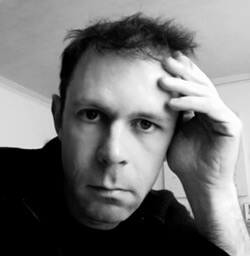 “A younger generation of New Zealand composers … have abandoned the country’s Romantic search for musical representations of landscape, and instead are reflecting upon increasingly personal engagements with concepts of space, memory and body” writes the curator of “The Body Electric”, Michael Norris. Kings Place is currently hosting a week of events exploring New Zealand music, poetry and ideas and “The Body Electric” was a programme of musical works that placed the body at the core of their conception.
“A younger generation of New Zealand composers … have abandoned the country’s Romantic search for musical representations of landscape, and instead are reflecting upon increasingly personal engagements with concepts of space, memory and body” writes the curator of “The Body Electric”, Michael Norris. Kings Place is currently hosting a week of events exploring New Zealand music, poetry and ideas and “The Body Electric” was a programme of musical works that placed the body at the core of their conception.
The opening work placed an actual body as the focus – a solo performer with two microphones attached to his body that were amplifying his internal sounds and those created by the movement of the body as the performer did some Kendo-like moves. Chris Black’s persona elemental for solo performer and electronics made an engaging opening to the programme: sensitive lighting, words that seemed to make the performance feel like a meditative act rather than a musical one, the amplification of the performer’s heartbeat giving the work its pulse. “By employing simple analogue technology, the performance is designed to preserve to a large extent the raw sounds of the body, in order to expose and communicate in a very direct way the organic complexity and expressive materiality of the body itself” (Chris Black). Michael Norris’ De Corporis Fabbrica for solo/amplified clarinet and visuals followed well – a piece based on the seven chapters of an anatomy book and this was also structured in seven movements to match the book. The images were extreme close ups of skin, an eye ball, and were not too dramatic to compete with the playing of Richard Haynes which was always expressive, with a broad spectrum of tonal control and vibrant articulation. Norris’ writing has a strong sense of line, and the overall structure of the work was compelling, with the features of the previous movements seemingly interacting with each in the seventh and final movement.

Michael Norris
Mouthpiece for solo voice and visuals by John Coulter was a pre-recorded work, and felt like an ad for a dental product with an extreme close up of a mouth. The device—the actual ‘mouth piece’—involved something inside the mouth of the speaker as well as a microphone. The process of repetition and subsequent processing of the sentence uttered by the speaker was akin to Alvin Lucier’s I am sitting in a room. The fourth item to complete the first half was John Croft’s …mit schwarzem Glanz for viola and electronics, performed superbly by Barbara Luneburg. The live viola was subject to a similar processing one hears in Anthèmes II by Boulez, with counterpoint being created through the interaction of the live and the processed. This work flowed well, with the sustained opening notes contrasting with undulating passages and increasingly rapid harmonic gestures.

John Croft
Nowdrifts for solo bass clarinet and fixed media opened the second half and we heard Richard Haynes again, with a subtle change of shirt from the first half. More so than in the first clarinet piece in the programme, this piece opened with breath sounds, blowing through the instrument. As Michael Norris writes, “”by employing simple analogue technology, the performance is designed to preserve to a large extent the raw sounds of the body, in order to expose and communicate in a very direct way the organic complexity and expressive materiality of the body itself.” Delicate conventional bass clarinet sounds slowly emerged, yet the fixed media was always in the foreground and often disguised Haynes’ playing. The ending, a low sustained note with an unexpected twist to a short note, was uncoloured by the pre-prepared media and as such it made this solo note even more poignant. The final work for ensemble made a theatrical close to the evening, not only in the numerous attempts to start the piece due to the failed linking of what appeared to be iPhones with the composer’s iPad (who was leading from her device at the front of the ensemble). Alexandra Hay’s QuantityNameDescriber for voice, clarinet, cello and electronics received a commitment performance from all, with particularly colourful and persuasive playing from Robin Michael. All of the performers were involved in speaking the text, and performing non-musical gestures with their hands and arms. The soprano Madeleine Peirard managed the complex vocabulary of the text with seeming ease.
An interesting programme but a shame there was only one work for ensemble. The performers coped remarkably well with the blips in the technology and this did little to detract from the musical intrigue some of the works afforded the listener.
—
Steven Berryman is a composer and teacher working and living in London. Follow him on Twitter: @Steven_Berryman






















